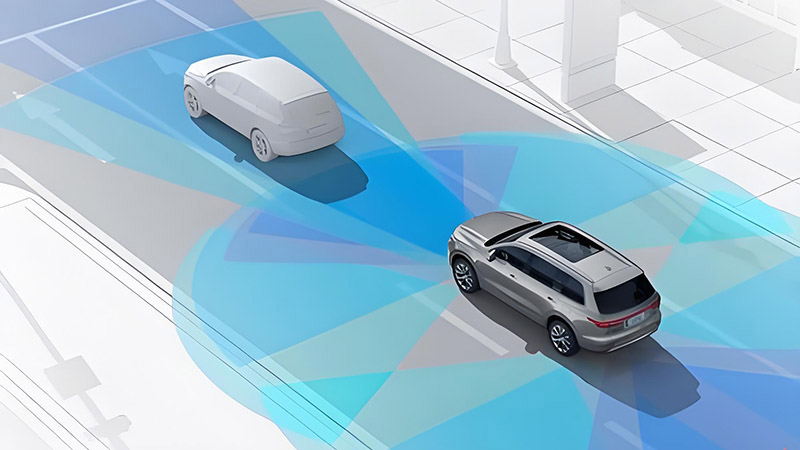Perception systems are the cornerstone of autonomous vehicles, enabling them to understand and interpret their surroundings in real-time. LiDAR (Light Detection and Ranging) technology has become a crucial component of these systems, providing high-resolution, three-dimensional data that enhances the vehicle’s ability to perceive and respond to its environment. This article explores the impact of LiDAR technology on autonomous vehicle perception systems, highlighting its contributions to object detection, environmental understanding, and overall system performance.

Understanding LiDAR’s Role in Perception Systems
1. Detailed Environmental Mapping
LiDAR technology creates detailed 3D maps of the vehicle’s environment by emitting laser pulses and measuring their reflections. This high-resolution mapping provides a comprehensive view of the surroundings, including the shape, size, and position of objects.
Detailed environmental mapping enables the perception system to build an accurate representation of the world around the vehicle. This representation is crucial for detecting obstacles, recognizing road features, and understanding the layout of the driving environment.
2. Precise Object Detection and Tracking
LiDAR’s ability to provide accurate distance measurements is essential for object detection and tracking. By measuring the time it takes for laser pulses to return, LiDAR can determine the precise distance to objects, allowing the vehicle to detect and track them effectively.
Precise object detection and tracking are critical for avoiding collisions and making safe driving decisions. LiDAR helps the perception system identify and monitor objects such as other vehicles, pedestrians, cyclists, and road signs.
3. Real-Time Data Processing
LiDAR continuously scans the environment and provides real-time data, which is essential for dynamic driving scenarios. The perception system must process this data quickly to make timely decisions and respond to changing conditions.
Real-time data processing enables the vehicle to adapt to new information, such as sudden obstacles or changes in road conditions. This capability ensures that the vehicle can navigate safely and effectively in various driving situations.
Enhancing Perception with LiDAR Technology
1. Improved Object Recognition
LiDAR’s detailed 3D data enhances the perception system’s ability to recognize and classify objects. By combining LiDAR data with information from other sensors, such as cameras, the system can achieve a more accurate and reliable understanding of the environment.
For example, LiDAR can provide depth information, while cameras offer color and texture details. Integrating these data sources improves the system’s ability to distinguish between different types of objects and interpret their relevance to driving decisions.
2. Enhanced Scene Understanding
LiDAR technology contributes to enhanced scene understanding by providing a detailed view of the driving environment. The perception system can use LiDAR data to interpret road features, lane markings, traffic signals, and other elements that are crucial for navigation and decision-making.
Enhanced scene understanding allows the vehicle to navigate complex scenarios, such as intersections, roundabouts, and merging lanes. It also helps the vehicle recognize and respond to changes in the environment, such as road closures or construction zones.
3. Robust Performance in Various Conditions
LiDAR’s performance is generally robust in different environmental conditions, including low light, fog, and rain. This capability ensures that the perception system can maintain reliability and accuracy even in challenging situations where other sensors may struggle.
For instance, in foggy or rainy conditions, LiDAR’s ability to operate effectively helps the vehicle continue to detect and respond to obstacles. This robustness contributes to overall safety and performance.
Challenges and Considerations
1. Data Integration and Sensor Fusion
Integrating LiDAR data with information from other sensors, such as cameras and radar, is essential for creating a comprehensive perception system. Sensor fusion involves combining data from multiple sources to enhance the system’s understanding and accuracy.
Effective sensor fusion requires advanced algorithms and computational power to ensure that data from different sensors is accurately combined and interpreted. This integration is crucial for achieving reliable and accurate perception.
2. Computational and Processing Requirements
Processing the large volumes of data generated by LiDAR requires significant computational resources. High-performance hardware and efficient algorithms are necessary to handle real-time data processing and ensure timely decision-making.
3. Cost and Accessibility
The cost of LiDAR technology has been a barrier to widespread adoption in consumer vehicles. However, advancements in manufacturing and technology are expected to reduce costs and make LiDAR more accessible for broader use in autonomous driving systems.
4. Calibration and Maintenance
Ensuring that LiDAR systems are properly calibrated and maintained is important for consistent performance. Regular calibration and maintenance help ensure that the LiDAR data remains accurate and reliable over time.
Future Directions and Innovations
1. Advancements in LiDAR Technology
Ongoing advancements in LiDAR technology, such as the development of solid-state LiDAR and improved scanning techniques, are expected to enhance performance, reduce costs, and increase accessibility. These innovations will further improve the effectiveness of LiDAR in autonomous vehicle perception systems.
2. Integration with Advanced AI Algorithms
The integration of LiDAR with advanced AI algorithms and machine learning models will continue to enhance the perception system’s ability to interpret and analyze data. AI-powered algorithms will improve object recognition, scene understanding, and decision-making capabilities.
3. Expanded Applications
As LiDAR technology continues to evolve, its applications will extend beyond autonomous vehicles to include other areas such as robotics, smart infrastructure, and urban planning. The continued development of LiDAR will drive innovation and new applications in various fields.
Conclusion
LiDAR technology has a significant impact on autonomous vehicle perception systems by providing detailed environmental mapping, precise object detection, and real-time data processing. Its contributions to object recognition, scene understanding, and performance in various conditions enhance the overall effectiveness and safety of autonomous driving systems. As technology continues to advance, LiDAR will play an increasingly important role in shaping the future of autonomous vehicles and their perception capabilities.


